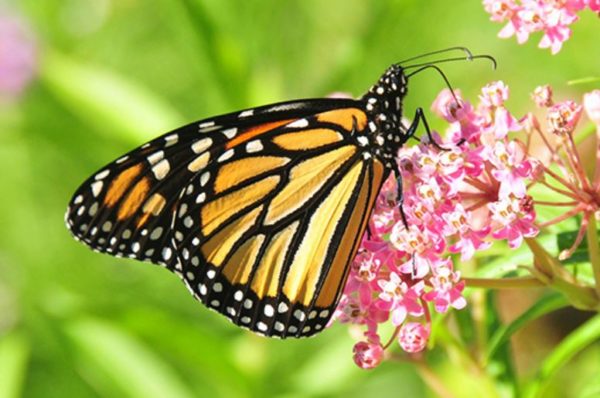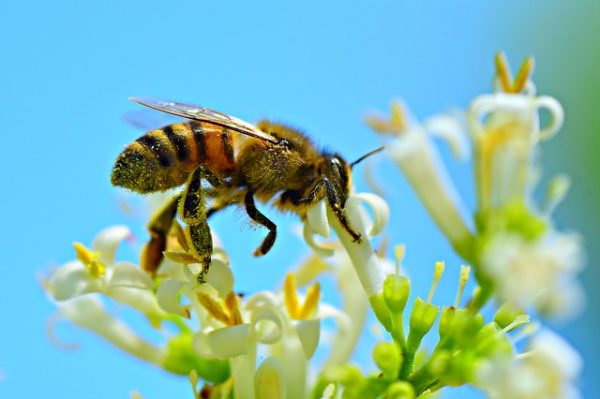Did you know that about one third of the foods we eat are dependent on pollinators? Not only that, but if we didn’t have pollinators, we wouldn’t have the flower gardens we enjoy, as well as many of the plant-based products we use every day. Pollinators include bees, butterflies, birds, and bats – animals and insects that carry pollen from plant to plant, allowing the plants to reproduce.

A wide variety of pollinators live in our state. In fact, there are over 950 species of honeybees native to Colorado. However, many pollinators, including bees, are declining in number. The decline is caused by pesticides, pollution, disease, climate change, and loss of habitat and nesting sites. There are things we can do, however, to protect pollinators. These include gardening with native plants, creating habitat areas, and avoiding the use of chemical pesticides whenever possible.
Below is a list of helpful resources from our library that you can use to learn more about pollinator species in Colorado, along with ways to attract pollinators and provide habitat.
Bats
- Bats of Colorado: Shadows in the Night (Colorado Division of Wildlife; book available for checkout)
- The Good Guys (Colorado Division of Wildlife)
- Survey for Bats in Jackson County, Colorado (Colorado Natural Heritage Program)
- Survey of Colorado’s Caves for Bats (Colorado Natural Heritage Program)
Bees
- Attracting Bees to Your Landscape (Colorado State University Extension)
- The Bees of Colorado (University of Colorado Museum of Natural History)
- Feeding Honey Bees in Colorado (Colorado State University Extension)
- Integrated Hive Management for Colorado Beekeepers (Colorado State University Extension)
- Native Bee Watch: A Colorado Citizen Science Field Guide (Colorado State University College of Agricultural Sciences)
Butterflies
- Attracting Butterflies to the Garden (Colorado State University Extension)
Hummingbirds
- Summer’s Hummers (Colorado Division of Wildlife)
- The Second Colorado Breeding Bird Atlas (Colorado Division of Wildlife; book available for checkout)
Plants and Habitat
- Activities Beneficial to Pollinators (Colorado Department of Agriculture)
- Creating Pollinator Habitat (Colorado State University Extension)
- Native Herbaceous Perennials for Colorado Landscapes (Colorado State University Extension)
- Native Plants Reference List (Colorado State University Extension)
- Pollinator Habitat Along Highway Corridors (Colorado Department of Transportation)
- University of Colorado Campus Pollinator Garden
Pollinator Protection and Conservation
- Adult Mosquito Control and Honey Bee Safety (Colorado Environmental Pesticide Education Program)
- EPA-Approved State-Managed Pollinator Protection Plan (Colorado Department of Agriculture)
- How Does Colorado Keep an Eye on Our Bees? And How Can You Help? (Colorado Department of Agriculture)
- Management Alternatives for Natural Communities and Imperiled Butterflies at Horsetooth Mountain Park, Larimer County, Colorado (Colorado Natural Heritage Program)
- Surveillance, Monitoring, and Natural History Investigations of Bats Related to White-Nose Syndrome Within the Colorado River Valley Field Office (Colorado Parks and Wildlife and US Bureau of Land Management)
- White Nose Syndrome in Bats Response Plan (Colorado Parks and Wildlife)
- Wild Colorado: Crossroads of Biodiversity (Colorado Division of Wildlife)

- How to Spot the Differences Between Eagles and Hawks - August 16, 2021
- How Transportation Projects Help Tell the Story of Colorado’s Past - August 9, 2021
- Time Machine Tuesday: The Night the Castlewood Canyon Dam Gave Way - August 3, 2021